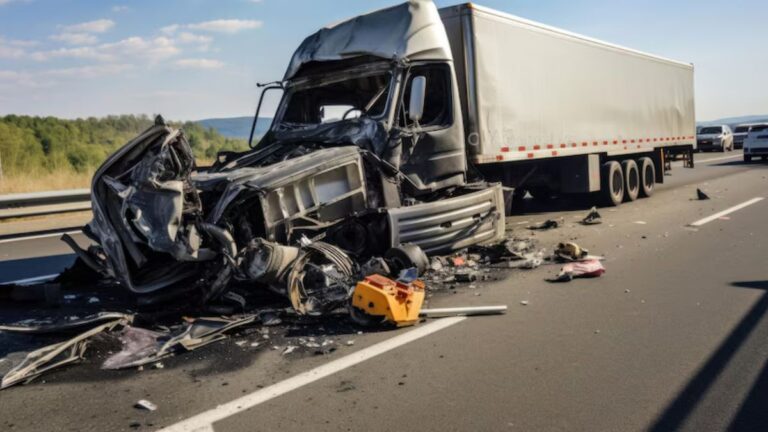Ensure Safety First
Following a truck accident, your priority should be to ensure your safety and the safety of others. If you can move, Get to a safe place away from traffic and the accident scene. This is essential to avoid more injuries from passing cars that might not notice the collision in time to prevent it. Try to signal for assistance if you’re hurt and unable to move. If available, use safety triangles and hazard lights to alert other drivers. In situations like these, having a first aid kit in your car can be very handy since it will enable you to treat minor wounds until help arrives.
Call Emergency Services
The next thing to do is to dial emergency services once you are in a safer position. To report the accident, dial 911 or your local emergency number. Provide a clear and precise description of your location, the severity of the crash, and any visible injuries or damage. The prompt arrival of emergency services ensures that injured parties receive immediate medical attention and helps manage traffic flow to prevent further accidents. This is also when you should consider the steps you must take after a truck accident to ensure everything is handled correctly from a legal and insurance standpoint.
Seek Medical Attention
Even if you feel fine, seeking medical attention following an accident is critical. Some injuries might seem minor initially but can develop into something more serious later. Whiplash, concussions, and internal injuries might not present symptoms immediately. Only a medical professional can adequately assess and document these injuries. This documentation can be pivotal if you pursue a legal claim or negotiate with insurance companies for compensation. Remember, immediate medical attention ensures your well-being and adds a layer of proof to your injury claims.
Document the Scene
Thoroughly documenting the accident scene is crucial for filing an accurate insurance claim and any potential legal proceedings. Use your smartphone to take high-resolution photos and videos of the entire scene from multiple angles. Take pictures of the involved vehicles, the surrounding area, and any road conditions or skid marks that might have caused the accident. Injuries should also be photographed because they can provide visual proof. Giving the other driver your name, contact details, insurance details, and license plate number is significant. Identify and talk to witnesses, collecting their contact information and statements if possible. Detailed documentation is your best defense in proving the facts of the incident.
What to Include in Your Documentation
- Photos of all vehicles involved, including close-ups of damage.
- Wide-angle shots of the scene, including skid marks and road conditions.
- Personal information and statements from witnesses.
- Police report details if available.
Contact Your Insurance Company
After ensuring your well-being and documenting the accident scene, notify your insurance provider about the incident as soon as possible. When communicating with them, stick to the facts and avoid making speculative statements or admitting fault. Provide any documented evidence you have collected, including photos, videos, and witness statements. Your insurance company will guide you through the subsequent process, which might include getting an estimate for vehicle repairs and dealing with claims adjusters. A clear and truthful account will expedite the claims process and avoid potential issues later.
Keep Detailed Records
Maintaining a well-organized file of all accident-related documents is essential. This should contain all insurance company correspondence, police reports, medical bills, and receipts for any costs incurred due to the accident. Keeping these records in one place ensures you have everything you need if there are disputes. It’s also beneficial to write down your accident account as soon as possible, noting the time, date, weather conditions, and any details you remember. These notes can be beneficial for refreshing your memory when speaking with insurance adjusters or legal professionals.
Consider Legal Advice
Consulting with a legal professional can be wise if the accident has led to significant injury or considerable property damage. Lawyers specializing in vehicular accidents can offer valuable advice and represent your interests, helping you understand your rights and responsibilities. They can assist in gathering additional evidence, negotiating with insurance companies, and taking your case to court if necessary. An experienced attorney can simplify the complex legal processes and help secure the compensation you’re entitled to, making a stressful situation more manageable.
Using Technology to Your Benefit
Technology can be a significant aid in the aftermath of an accident. Many apps can store your emergency contact information, medical details, and insurance information, which is crucial in such scenarios. With the aid of these apps, information gathering and sharing can be streamlined, making it more straightforward to submit insurance claims and monitor their progress. In addition, many insurance providers have apps that allow users to file claims, follow their development, and have real-time conversations with adjusters. Employing these technological tools can save you time and reduce the stress of managing post-accident procedures.
